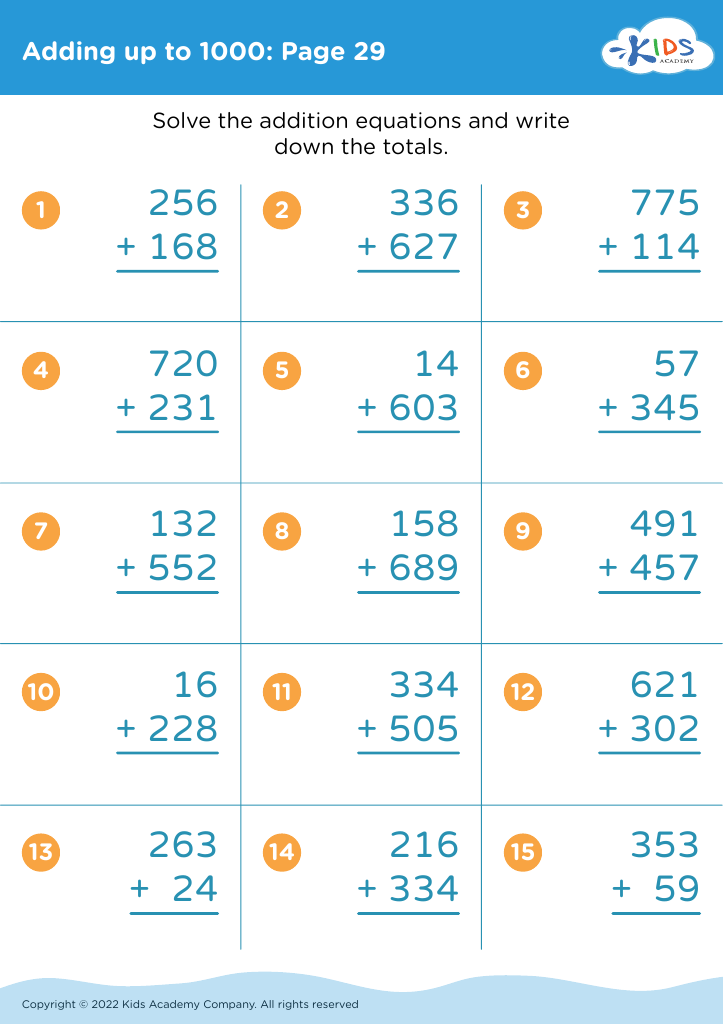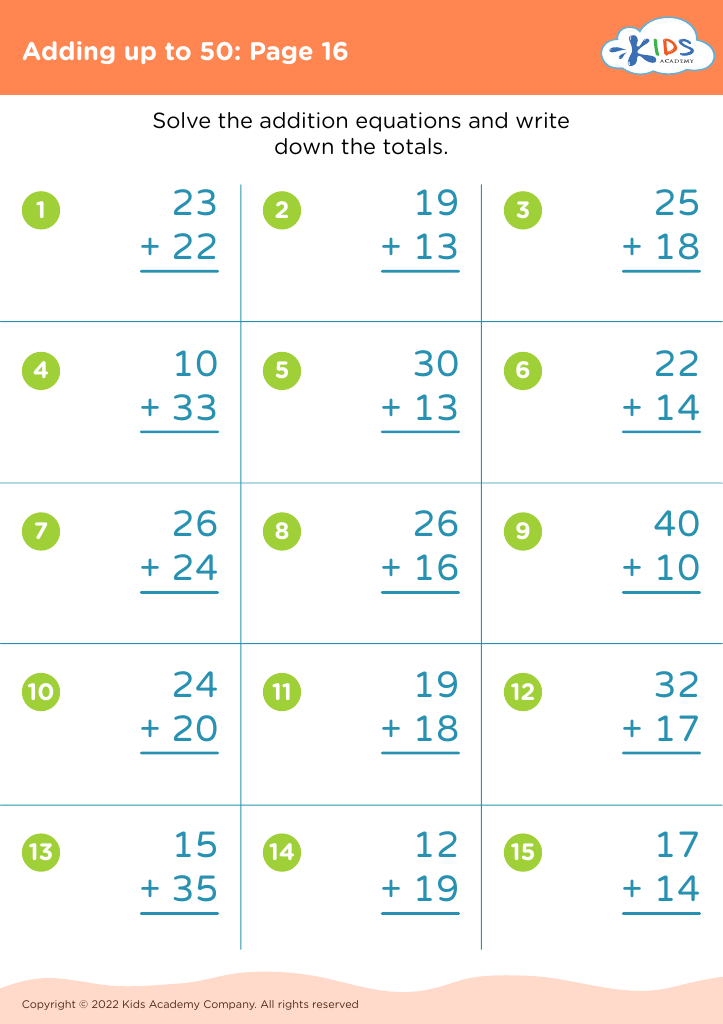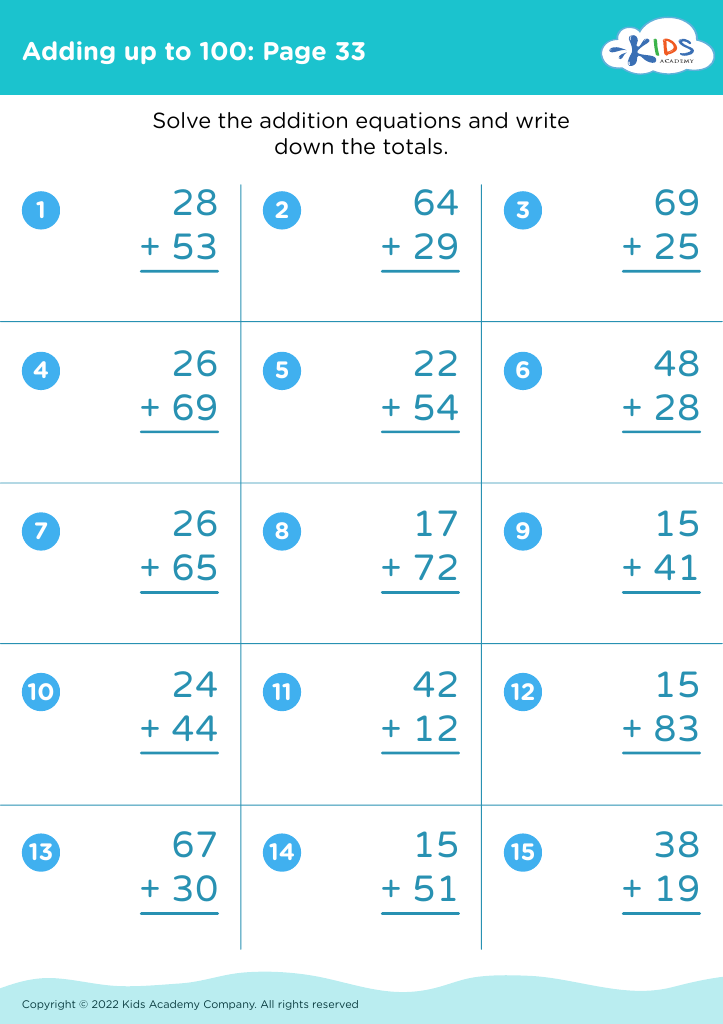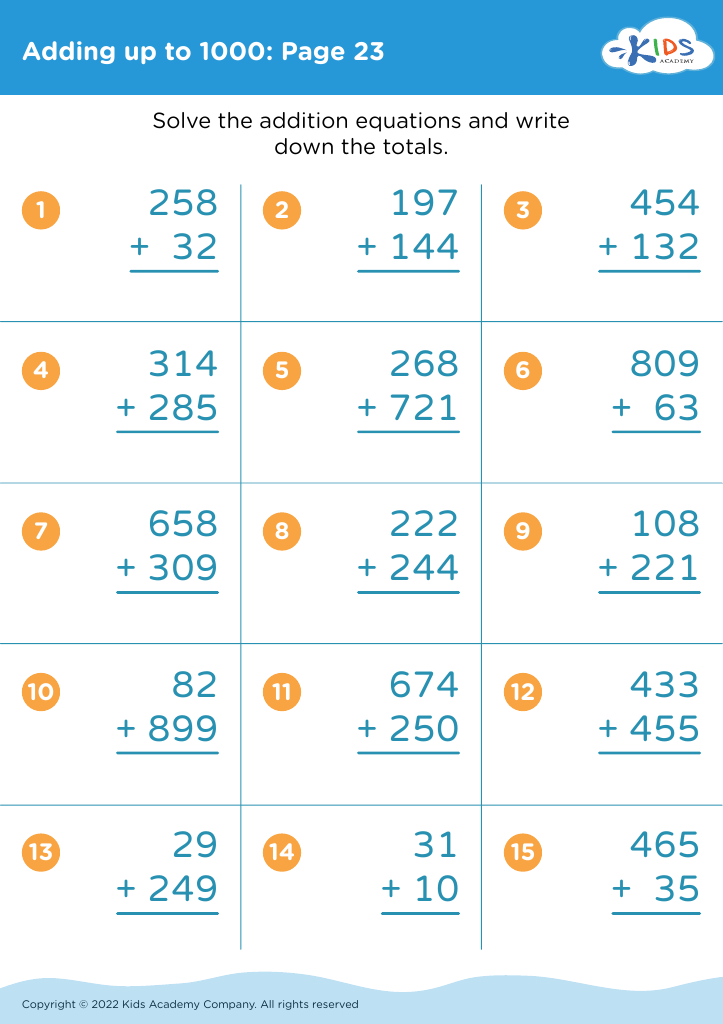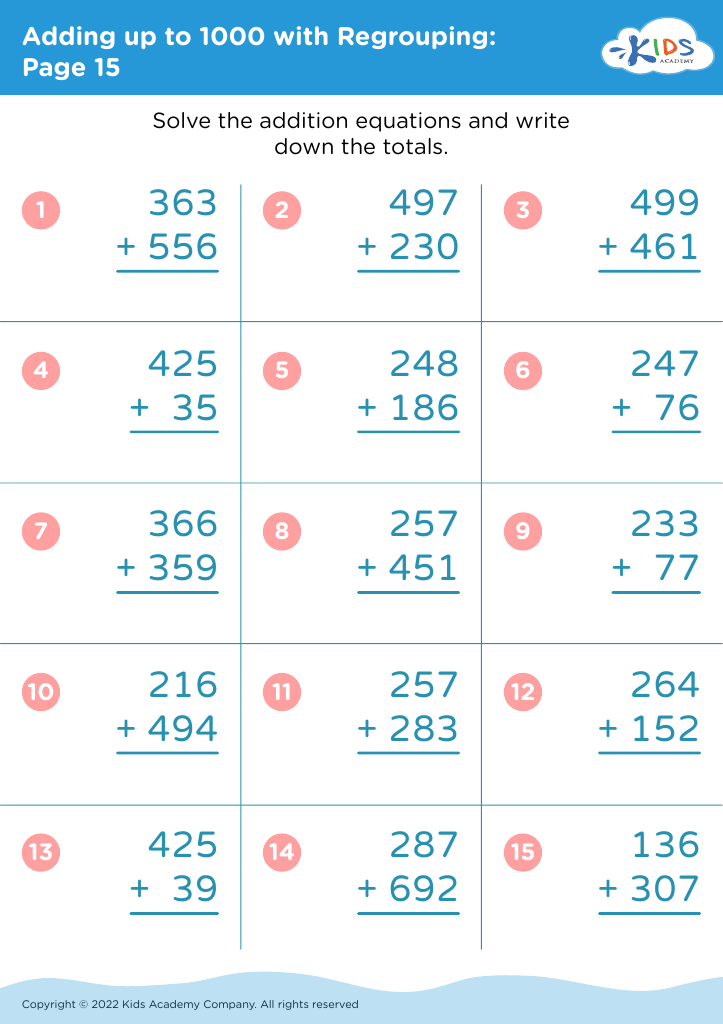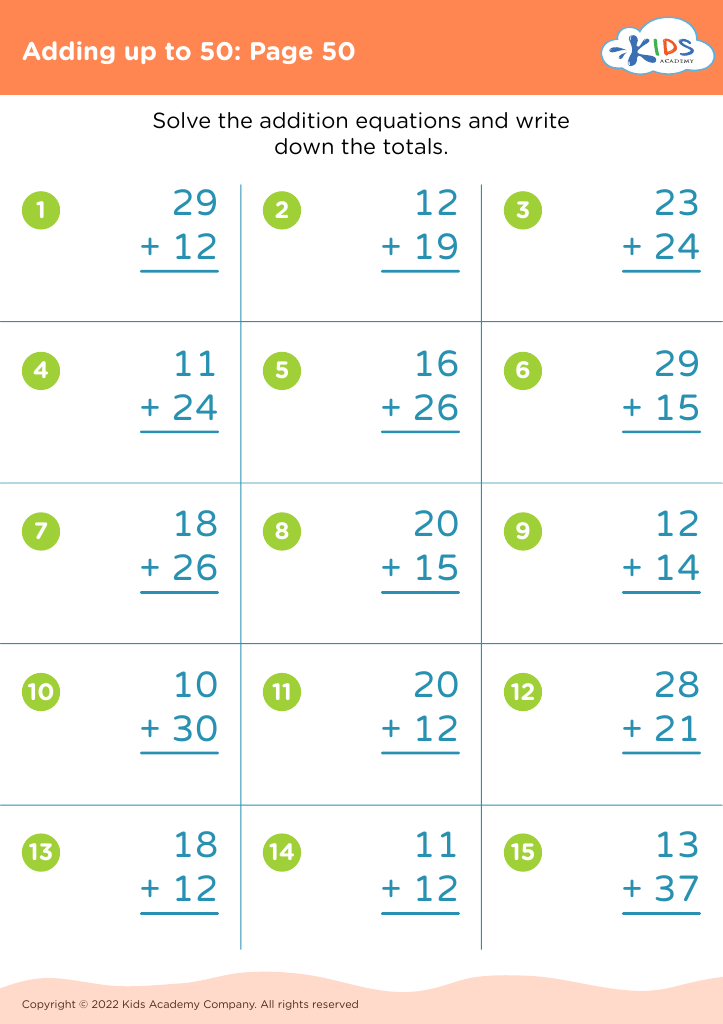Understanding time Math Worksheets for Ages 3-9
10 filtered results
-
From - To
Unlock your child's potential with our "Understanding Time Math Worksheets for Ages 3-9." Our specially designed worksheets help young learners grasp essential time-telling skills through fun and engaging activities. From recognizing clocks to calculating hours and minutes, these worksheets cater to various learning levels and build a solid foundation in time comprehension. Perfect for both classroom and home use, our resources support early education development and ensure children enjoy learning math at their own pace. Set your child on a path to success with Kids Academy time worksheets today!


Years Worksheet
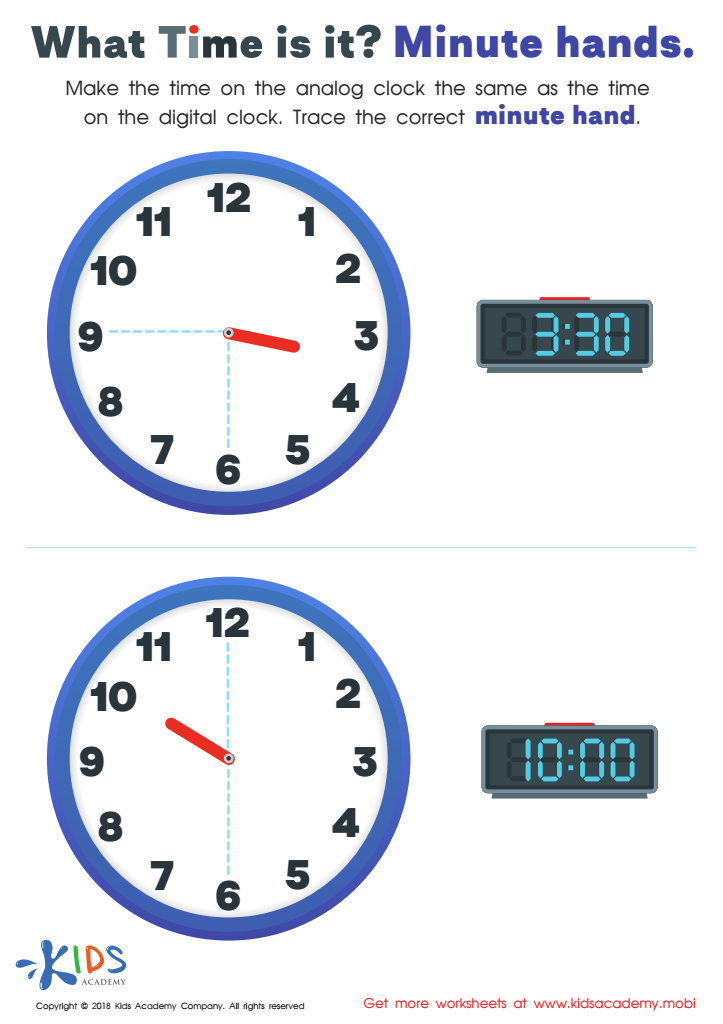

What Time Is it? Minute Hands Worksheet
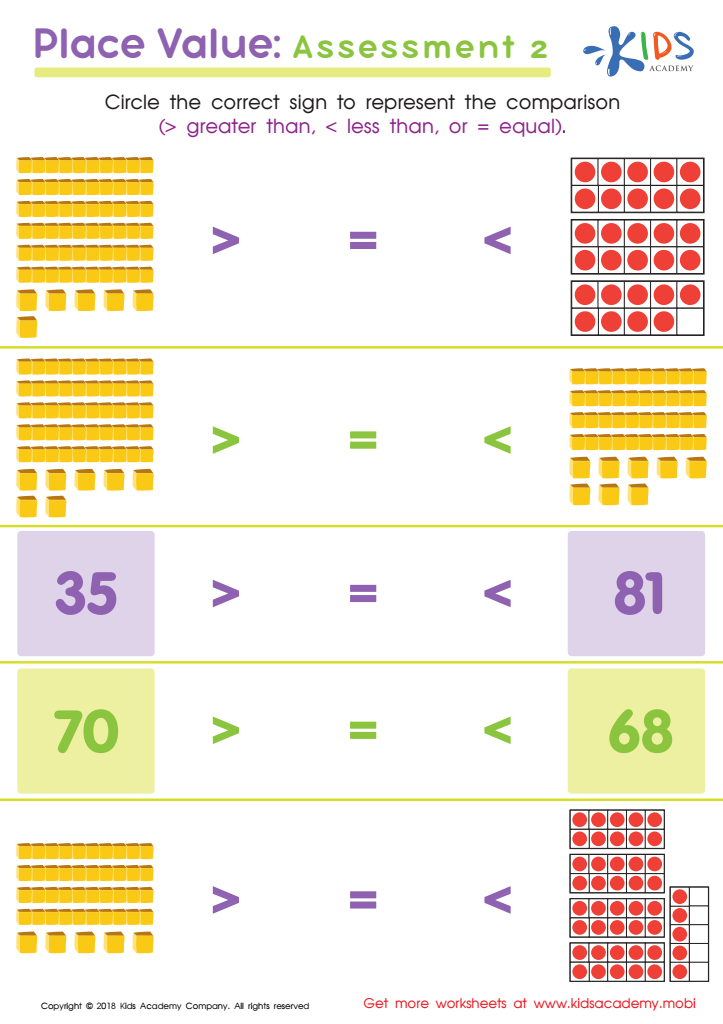

Place Value: Assessment 2 Worksheet
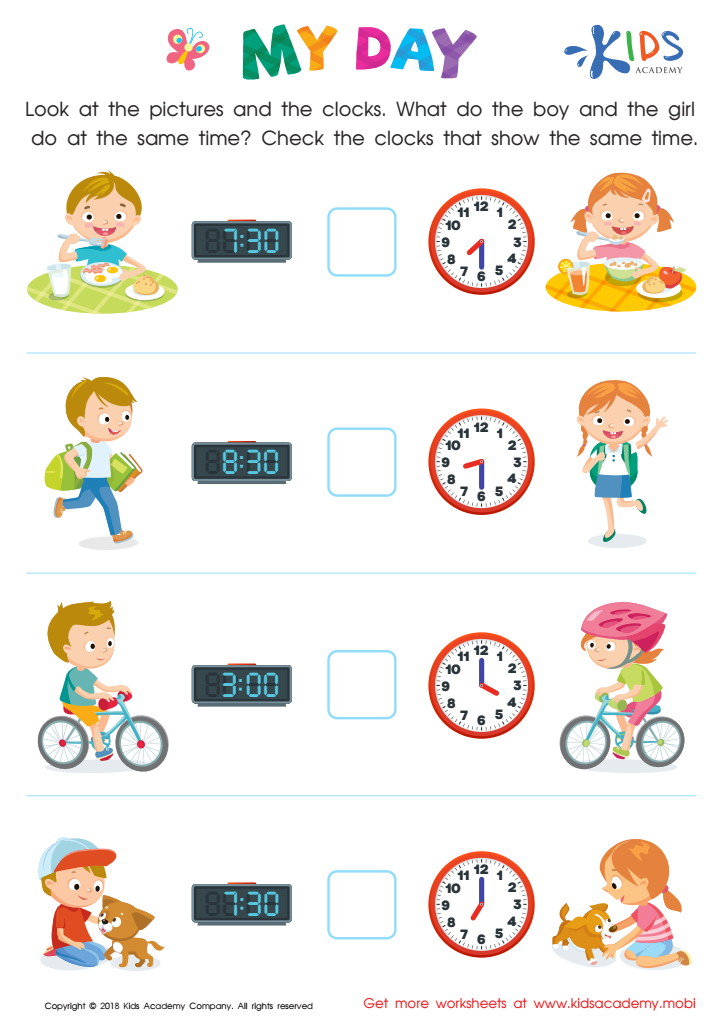

My Day Worksheet
Understanding time is a fundamental aspect of a child's cognitive and developmental growth, and it's crucial for parents and teachers to emphasize it from an early age. Time concepts help children grasp patterns, sequence daily activities, and build routine. For ages 3-9, learning about time enhances their ability to predict and plan and fosters independence in managing their day.
For younger children, recognizing different times of the day and linking them with specific activities can boost their sense of security and preparedness. For instance, knowing that bedtime follows dinner instills a sense of order. Introducing tools like clocks encourages the development of both number recognition and basic math skills, with even simple tasks like recognizing “o’clock” and "half past" providing a foundation for later understanding more complex time-related concepts.
For educators, teaching time integrates several subject areas— such as math, science, and daily language use — enriching the curriculum holistically. Developing a habit of punctuality and an understanding of designated school periods strengthens discipline and efficient time use in their educational journey.
Overall, a solid grasp of time supports learning in broader areas and is pivotal for the child's overall development, bridging the gap between abstract counting concepts and real-life application.
 Assign to My Students
Assign to My Students

